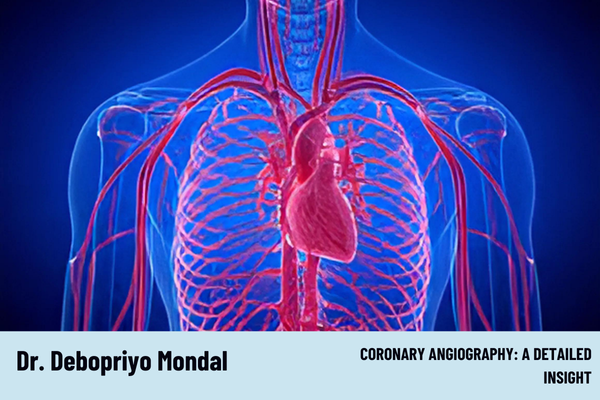Coronary angiography is a specialized medical imaging technique used to visualize the arteries that supply blood to the heart. This procedure helps in diagnosing coronary artery disease (CAD) by identifying blockages or narrowing of the arteries. Dr. Debopriyo Mondal, one of the best cardiologists in Kolkata, provides valuable insights into the importance, procedure, and potential risks associated with coronary angiography.
What is Coronary Angiography?
Coronary angiography is a part of a group of procedures known as cardiac catheterization. It involves injecting a contrast dye into the coronary arteries and using X-ray imaging to examine the blood flow to the heart. The images produced, called angiograms, help detect any blockages or abnormalities in the arteries.
When is Coronary Angiography Recommended?
Coronary angiography is generally recommended for patients who:
- Have symptoms of coronary artery disease such as chest pain, shortness of breath, or fatigue.
- Have abnormal results from other heart tests like an ECG or stress test.
- Have had a heart attack and require an assessment of the arteries for further treatment.
- Need a clearer diagnosis for heart conditions before undergoing heart surgery or other interventions.
How is Coronary Angiography Performed?
The procedure is usually performed in a hospital’s catheterization lab. Here’s a brief overview of the steps:
- Preparation: The patient is given a local anesthetic at the insertion site, which is usually in the groin or wrist.
- Catheter Insertion: A thin, flexible tube called a catheter is inserted into the artery and guided toward the heart’s coronary arteries.
- Injection of Dye: Once the catheter is in place, a contrast dye is injected into the coronary arteries. This dye helps in visualizing the arteries during the X-ray imaging.
- Imaging: Using X-rays, the doctor takes detailed images of the arteries to detect blockages or narrowing.
- Completion: After the procedure, the catheter is removed, and the insertion site is closed.
The entire process typically takes 30 to 60 minutes, and patients may be required to stay in the hospital for observation for a few hours or overnight.
Benefits of Coronary Angiography
Coronary angiography is a highly effective diagnostic tool. The benefits include:
- Accurate Diagnosis: It provides a clear picture of the coronary arteries, helping in precise diagnosis of heart disease.
- Treatment Planning: Based on the angiography results, the cardiologist can decide on the best course of treatment, whether it’s medication, angioplasty, or bypass surgery.
- Preventing Heart Attacks: Early detection of blockages can prevent serious complications like heart attacks by enabling timely intervention.
Risks and Considerations
While coronary angiography is generally safe, like any medical procedure, it carries certain risks. These may include:
- Bleeding or Bruising at the catheter insertion site.
- Allergic Reaction to the contrast dye.
- Irregular Heartbeats (Arrhythmias) during the procedure.
- Kidney Damage in patients with pre-existing kidney conditions.
Dr. Debopriyo Mondal ensures that every patient is thoroughly evaluated to minimize any potential risks and receive the most appropriate care.
Conclusion
Coronary angiography is a vital tool in diagnosing and managing heart disease. With the guidance of an experienced cardiologist like Dr. Debopriyo Mondal, patients can gain clarity on their heart health and take the necessary steps toward effective treatment and prevention of further complications.
